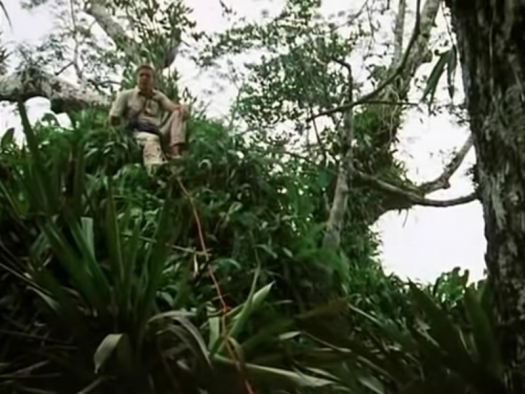With Sir David Attenborough
Jungle is devoted to the jungles of the tropics. Attenborough ascends a kapok in the South American tropical rainforest to observe "the greatest proliferation of life that you can find anywhere on the surface of the Earth." There are two main causes for this: warmth and wetness. As this climate is constant, there are no seasons, so trees vary greatly in their flowering cycles. However, each species does so at the same time and, because of the lack of wind, relies on birds and insects for pollination.
Bromeliads have their own population of visitors, largely due to their chalice-like rosettes of leaves that hold water. This is used by some for drinking, or, as in the case of the poison dart frog, for depositing tadpoles. Attenborough also highlights those species that have perfected the art of camouflage, including phasmids.
The most densely populated part of the jungle is in its uppermost reaches. Around halfway down, there is little life, apart from those that inhabit nest holes, such as macaws, or use the trunks and lianas to aid movement. The jungle floor is not very fertile as the rain washes away any nutriment from the soil. Tree roots therefore rely on a kind of compost formed from decaying leaves — a process that is greatly accelerated in the natural humidity.
After a tropical storm, an aged kapok comes crashing to the ground, leaving a gap in the canopy above. The process of renewal then begins as saplings race to fill the space created.



